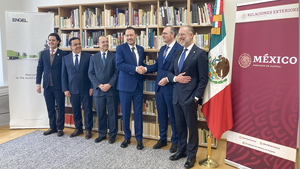Resin Report: Pricing Power Now in Hands of Processors
Further price erosion is expected this month, following three quarters of producer increases and record high prices.
December 15, 2021

A very heavy flow of offers, predominately for high-density (HD) polyethylene (PE), low-density (LD) PE, and homo-polymer polypropylene (PP) grades did not translate into high sales volume last week, reports the PlasticsExchange in its Market Update. Transactions were heavily slanted toward PE, which saw prices flat to $0.04/lb lower, depending on grade. Prime PP prices, which had already been battered, held steady against limited action. Off-grade railcars were again deeply discounted.
An overall negative tone persists throughout the resin sector, though the downward global economic trend that had been prevalent subsided some as optimism emerged that the Omicron variant would not be as damaging as originally expected, thus easing consumer demand concerns.
Crude oil and financial markets also rebounded from their dismal performance at the start of December, following a government-reported increase in US inflation, which showed consumer prices with their largest year-on-year increase since 1982.
Although the down trend continues for resin export prices out of Houston, further discounting is still needed to open the high-volume incremental export arbitrage, as US resin prices have yet to become competitive outside of North and South America. However, logistics constraints stemming from a lack of equipment and personnel complicated exporters’ efforts to move the glut of material from full warehouses in Houston and California. This also comes as resellers are trying to move higher cost lots and limit their losses. For now, at least, pricing power is in the hands of processors with further room for price decay in December after three quarters of producer increases and record high prices. With the Q4 purge picking up steam, the PlasticsExchange expects producers to do their best to turn the market higher in Q1 of 2022.
PE resin trading ticks up
PE trading improved the week of Dec. 6, as buying activity increased compared with the window shopping, tire kicking, and light volumes experienced the previous couple of weeks. Film grades were the biggest movers, with linear-low-density (LLD) PE seeing the most volume, followed by LDPE, as both dropped a penny along with high-molecular-weight Film, reflecting more widespread availability. HDPE Injection and Blow Mold came off another $0.03 to $0.04/lb, as their once huge premiums continued to deflate, but those grades still did not garner serious demand. LDPE high flow for injection, which is still among the hardest commodity resins to source, was the only PE grade not to drift lower, instead holding steady and maintaining levels still in the $0.90/lb range. Prompt premiums also remain in place for those limited uncommitted quantities of material available from resellers. However, railcars for most PE grades remain available with three-week lead times, and deeply discounted offers are on the table for those willing to commit. Unless market sentiment shifts and direction changes, the continued and gradual price erosion is setting up for another decrease for December PE contracts, perhaps a nickel or more, following the collective $0.10/lb drop for October and November contracts, according to the PlasticsExchange. PE contracts are still up a net $0.31 to 0.33/lb for 2021 thus far. Another monthly decline would still keep contract prices well above where they began the year.
PP resin supply exceeds demand
PP trading had another lackluster week as supply continued to outweigh demand, and buyers remained patient with anticipation of further price erosion ahead. After spot PP chunked off a huge $0.07/lb to start the final month of 2021, domestic co- and homo-polymer PP held steady this past week, having already fallen well in excess of PP contracts. Despite the lack of movement, homo- and co-polymer PP remained relatively expensive, with prime pricing still hanging in the vicinity of $1/lb. Off-grade can be found considerably cheaper, however.
The pause in the downward trend came alongside a production outage at one PP plant in Texas. Some supply strain was already expected in December, with another producer taking a planned turnaround. Early industry indications also showed PP production came down by nearly 5% in November, the fifth consecutive monthly decline after topping out in June. Aside from the early onset of COVID-19 in April 2020 and the impact of winter storm Uri during February and March 2021, November had the second lowest operating rate in the past 23 months. Availability for most PP grades is considered loose, and even prompt premiums have eroded to minimal levels.
The PlasticsExchange expects PP contracts to endure a double-digit loss for December, which will include both a monomer-related cost decrease and a very likely PP margin decrease. Exports are still lagging 2019 and 2020 monthly averages by about 50%. Heavy PP imports stopped months ago, though some late shipments are still being off-loaded in congested California ports. It should be noted, however, that conditions in Los Angeles and Long Beach have improved dramatically over the past month. More slowdowns and turnarounds in production are anticipated until either exports increase or excess import supply cleans up, causing more of a pull from domestic inventories to better balance supply/demand.
Read the full Market Update, including news about PGP pricing and energy futures, on the PlasticsExchange website.
You May Also Like


